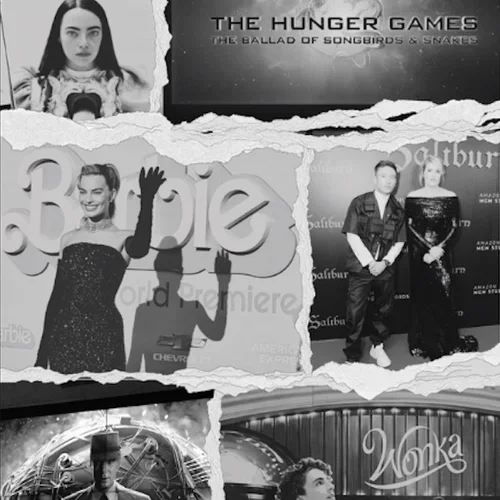From Grunge to Glamour
The 1990s was not only a decade but an emblem of a new fashion landscape. Fashions of recent years have indisputably brought the trends of the ‘90s back into style.
Fashion enthusiasts tend to reflect on this period for inspiration or to recreate iconic outfits from the decade. When it comes to the ‘90s, we look back at the grungy looks in media of the time, from makeup to fashion fads.
There is no denying the influence films, TV shows, or books have on our society. Movies like Clueless (1995), Scream (1996), and Pretty Woman (1990) have all been sources of inspiration for fashion trends of today.
Costume designer Cynthia Bergstrom, most known for her work in Buffy the Vampire Slayer and Scream (1996), shared her experiences working in the fashion industry when it was at its peak.
While the '90s undoubtedly left an undeniable mark on fashion history, Bergstrom also shares her thoughts on the current state of fashion.
“I really like what's happening in fashion today. I look at fashion today, and it's slouchy, and I love the lines, and I love how you can have your body-conscious outfits--sometimes I love dressing like that.”
With the comfortability of fashion today, it is easy to hide your insecurities. In the ‘90s, fashion was all about glamour. Not only glamour, but it was the start of something different.
Throughout this piece, we will learn about the phenomenon of the 1990s era and why it is so highly praised. Deep diving into the world of the ‘90s: the celebrities, the pop culture, and the niche of it all––to better understand its massive influence.
‘90s media has proved to be an excellent source of fashion research and inspiration as said era birthed many different styles.
There were grunge looks like the styling in The Craft (1996), preppy looks like that of Julia Roberts’ character in Pretty Woman (1990), and a mix of both aesthetics in films like 10 Things I Hate About You (1999), just to name a few beloved works that changed the fashion landscape forever.
Thousands of styles mark each decade, and the ‘90s were no exception. The famed decade was filled with countless diverse fashion styles, which is why it has become as influential as it is.
The ‘90s, in particular, was arguably the most pivotal decade of fashion to date. The landscape of the fashion industry changed drastically throughout this period, as people began wearing what they wanted, when they wanted, with less attention to social norms than in past decades.
This was the start of something that was seemingly unheard of, as people did not care to dress like everyone else anymore. In the ‘90s, fashion became more than just clothes on your body; it was a statement of who you are and how you want to be perceived.
Reflecting on the iconic era, Bergstrom made a good point: politics and social issues affect fashion, impacting the trends and styles of each decade.
For example, The Great Depression was a time of economic sadness, where a shortage of money influenced the clothing people wore. It came to a point where women and men had to hand-make their clothes to save money, branding the ‘30s as a time of creativity and upcycling old garments into something new.
When we think of making our own clothes––it is seen as creative rather than something forced––as fashion has evolved entirely since the Depression. Each decade has its own “aesthetic.” When you think of the ‘70s, you think of Bohemian styles or the ‘80s, where bright colors, tights, and poofy hair come to mind.
Amidst political events and world issues, we come to see new ways of fashion.
“Like, Sound Garden came into the mix, and the whole grunge look,” said Bergstrom, giving insight on what made the look of the nineties. “I feel there was an acceptance of being that was really starting.”
What was your favorite look from one of her movies? Leave comment below!




